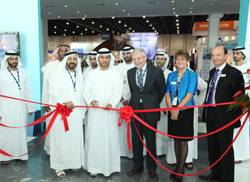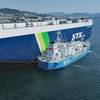Offshore O&G Fuels Workboat Growth in Middle East
Middle East Workboats 2011 opens on optimistic note - 58 new OSVs required to support recent oil and gas contracts worth $10b The maritime commercial climate in the Middle East is in buoyant mood, especially for the workboats sector, as investment in the offshore oil and gas industry spurs demand for offshore support vessels (OSVs), according to industry experts speaking at Middle East Workboats 2011. The three-day conference and exhibition was officially opened by Awaidha Murshed Al Murar, Director of Shared Services, ADNOC, along with Khalifa M. Al Qubaisi, General Manager, IRSHAD and Chris Hayman, Chairman of Seatrade, and runs from 3-5 October at the Abu Dhabi National Exhibition Centre.
At the opening conference session, the historic relevance of the region as a trade hub provided the focal point for an in-depth analysis of the current economic situation. “With a high number of ambitious projects spread across the region, there are numerous opportunities. Oil and gas sector demand is set to remain high, with relatively high prices, which means more money for exploration and production (E&P) - which will have a positive effect for our industry,” said Lars Seistrup, COO, SVITZER Asia, Middle East and Africa
The twin challenges of piracy and crew recruitment are also set to be recurring themes on the two-day conference agenda. According to Seistrup, the growing threat from East Africa especially, is becoming a year-round issue. “The International Maritime Bureau reported 100 attacks in 2010 and in 2011 there have already been 163; we are extremely vulnerable and there is no easy solution. With the current situation, if a vessel is in distress who will help you? The topic of putting armed guards on board vessels has been mooted, but this is not popular within the industry.”
To drive the market in the long-term, Seistrup argued that the Gulf is in a prime position to become a regional shipbuilding hub, enabling the Gulf to compete with the long-established Asian markets and convince Middle East owners to “buy local”.
Vincent Weve, General Manager, Stanford Marine, also focused on the growing number of oil and gas projects in the UAE, Saudi Arabia and Qatar, with recent contracts awarded to the tune of more than US$10 billion and requiring up to 58 new OSVs within the next couple of years.
“Despite obvious project delays, we are seeing more enquiries from Egypt and both Iraq and Kuwait are up-and-coming destinations on the industry radar, with between a 10-20 per cent increase in exploration resulting in higher demand for OSV support,” he remarked.
According to Weve, the Middle East currently has 15 per cent of the global anchor handling tug supply vessel (AHTS) market share, compared with the global average of six per cent.
In addition Weve added that the ageing fleet in the region is also a hot topic for delegates and exhibitors this week with the growth in new vessels rising from 10 per cent in 2000 to 44 per cent in 2010, but the number of vessels aged 26 years or older has increased from 17.9 to 39 per cent over the last decade.
Utilization figures are also proving to be positive indicators for the industry as a whole, with Weve reporting up to 91 per cent utilization across the Stanford Marine fleet, with peer companies reporting equally buoyant rates.











